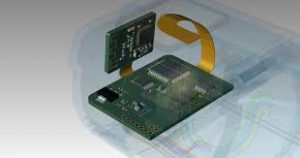Connectors Are Used With Flex PCBs
Regardless of the application, flex circuits will have to connect to something. For this reason, a reliable flex circuit supplier will be able to offer the best possible connector hardware to suit your design needs. In most cases, this means connecting a flex circuit to a rigid PCB but cable harnesses, polyester membrane switches and even other flex circuits are also viable options. Thorough testing and validation procedures are crucial for verifying that these connection systems can withstand the various stresses of real-world usage scenarios.
Using flex pcbs is an excellent way to streamline the assembly process in electronic devices. These compact substrates have high levels of flexibility and tensile strength, which allow them to be folded and reshaped into complex three-dimensional configurations for use in applications like heads-up displays for aerospace piloting or minuscule devices that can be worn on the body for medical care.
Flex circuits can also replace traditional wire harnesses and ribbon connectors in many applications, resulting in reduced assembly time and cost as well as improved mechanical reliability and signal transmission.

What Types of Connectors Are Used With Flex PCBs?
Because they are designed to experience minimal bending, flex circuits must be connected to something that can support their structural integrity and withstand vibration or movement. Rigid PCBs are the most popular choice for this purpose, but they may not be ideal depending on the application in question. For this reason, flex circuits are often connected to other flex circuits through connector systems that specifically take into account their unique bending capabilities. This is known as a FPC-to-FPC connector system and it can be found in many electronic products including flip phones, digital cameras with adjustable parts, portable gaming consoles, and medical instruments.
These connectors are typically composed of an FPC receptacle and a mating FPC contact connector. They are available in several different configurations and sizes, with a variety of contact pin patterns to choose from. These pins are linked together by a supporting stiffener that attaches to the opposite side of the flex in the connector area.
In the case of SMT connectors, the stiffener will feature a traditional array form that is easily supplied using a standard pick and place methodology. In the case of PTH connectors, the stiffener will have slightly oversized clearance holes to accommodate the pins of the mating FPC contact connector.
The most common interconnect system between a FPC and a rigid PCB or another flex circuit is called a ZIF connector. This system features a clamping mechanism that exerts minimal force on the inserted component during both insertion and removal processes, thereby protecting it from premature damage to the terminal-to-FPC solder joints.
ZIF connectors also have a wide range of capability, from standard low-level signals to high-speed controlled impedance and higher current carrying capacity. As a result, they are an essential part of the overall connectivity infrastructure for modern electronics. Thorough testing and validation procedures ensure that these systems can withstand the numerous environmental stressors they are subjected to during use, allowing them to remain functional and reliable for extended periods of time.